and the distribution of digital products.
DM Television
Best AI 3D Design Tools: Transforming Creativity and Workflow
Remember when 3D design meant weeks of sculpting polygons, tweaking UV maps, and praying your GPU didn’t crash during a render? In 2025, AI has rewritten the rules. Whether you’re a game developer, product designer, or hobbyist printing custom figurines, AI 3D modelling software is your new collaborator. These tools don’t just automate grunt work—they spark creativity, turning rough sketches into polished models and text prompts into intricate STL files. Below, we discuss the best AI 3D model generators of 2025, spotlighting their strengths, pricing, and ideal users. Let’s dive in.
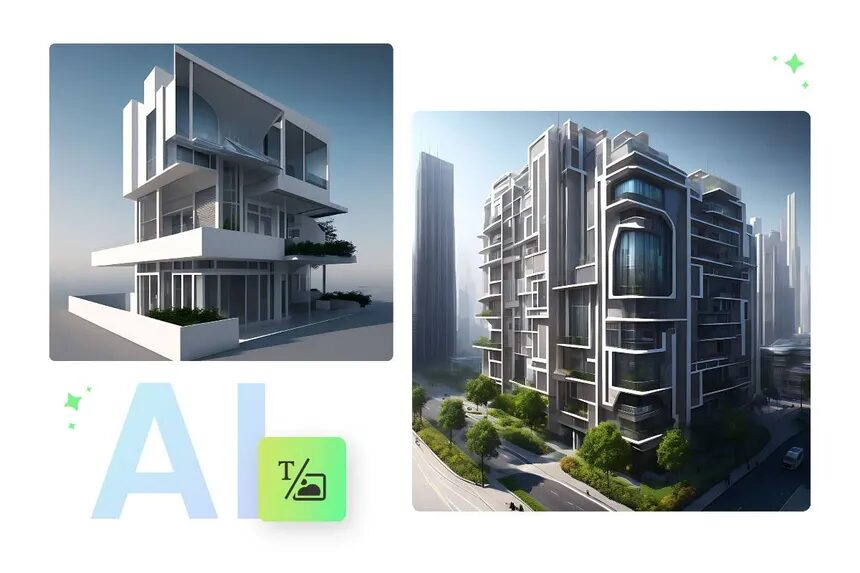 How AI is Revolutionizing 3D Design Tools
How AI is Revolutionizing 3D Design Tools
AI’s role in 3D design goes beyond automation. Here’s how it’s changing the game:
- From Manual Labor to Smart Automation: AI handles repetitive tasks like retopology, UV unwrapping, and mesh optimization, freeing creators to focus on creativity. Tools like Kaedim turn 2D sketches into 3D models in seconds, while STLforge AI auto-fixes geometry for 3D printing.
- Text-to-3D: Imagination Unleashed: Describe a concept in words, and tools like 3DFY.ai generate fully rigged, textured models. This is a game-changer for rapid prototyping and indie developers with limited resources.
- Precision and Realism: AI enhances accuracy—simulating physics in NVIDIA Omniverse, predicting fabric draping in Meshcapade, or auto-generating PBR textures in Adobe Substance 3D GenAI.
- Democratizing Design: Beginners can now create professional models without years of training. Luma AI DreamMesh converts smartphone videos into 3D scenes, while DeepMotion animates characters using simple video uploads.
- Collaboration at Scale: Cloud-based AI tools like Omniverse enable real-time teamwork, with AI resolving version conflicts and suggesting optimizations.

NVIDIA Omniverse AI has evolved into a powerhouse for teams. Its generative AI physics engine predicts material behaviour, while AI auto-optimizes meshes for gaming, 3D design and printing. Architects use it to simulate real-world lighting, and engineers rely on its STL AI generator for error-free prototypes. The 2025 update introduced AI texture synthesis, creating photorealistic materials from basic descriptions like “weathered oak” or “futuristic alloy.” It also allows the users to collaborate with multiple people on one project.
Pricing:
- For Individuals, the software is free to use.
- The Nvidia Omniverse Software Enterprise costs $4500 per GPU per year.
Also Read: How to Build Your Own ChatGPT ChatBOT?
Kaedim 3.0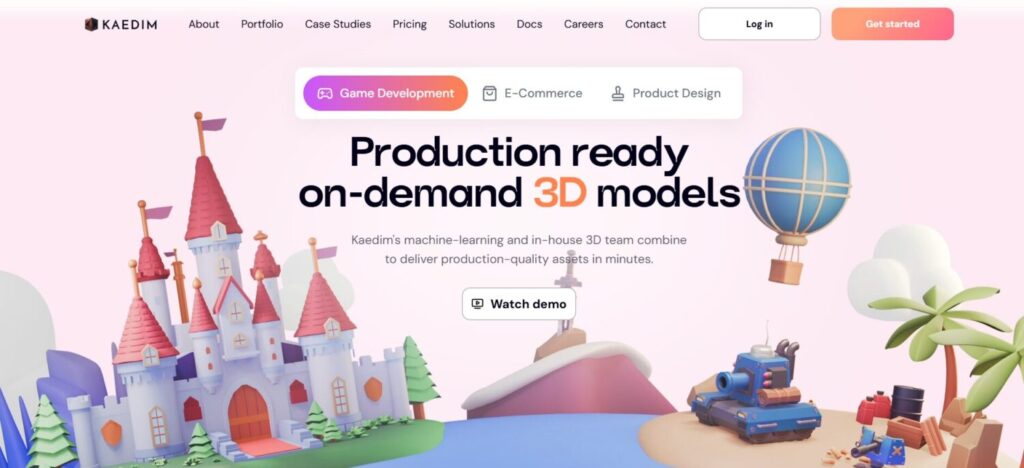
Kaedim remains the best AI 3D designing and model generator for transforming 2D art. Upload a sketch, and its AI extrapolates depth, adds topology, and even suggests materials. The 2025 version added UV unwrapping and LOD (level-of-detail) optimization, making it a favourite for indie game devs and e-commerce brands. Users can also use it to make their 2D logo into 3D to make their brand more appealing.
Pricing:
- Indie ($400/month): Users get 20 credits with a maximum credit limit of 100, with each additional credit costing $22 if they choose to buy extra. It provides a Discord Server for support.
- Pro ($1200/month): Users get 60 credits with each additional credit costing $16 if they choose to buy extra. It provides a Discord Server for support. This plan is ideal for teams prototyping new projects.
- Enterprise: Tailored plan according to the demand.
Also Read: Chatbase Review: Build AI chatbots without coding
DeepMotion Animate 3D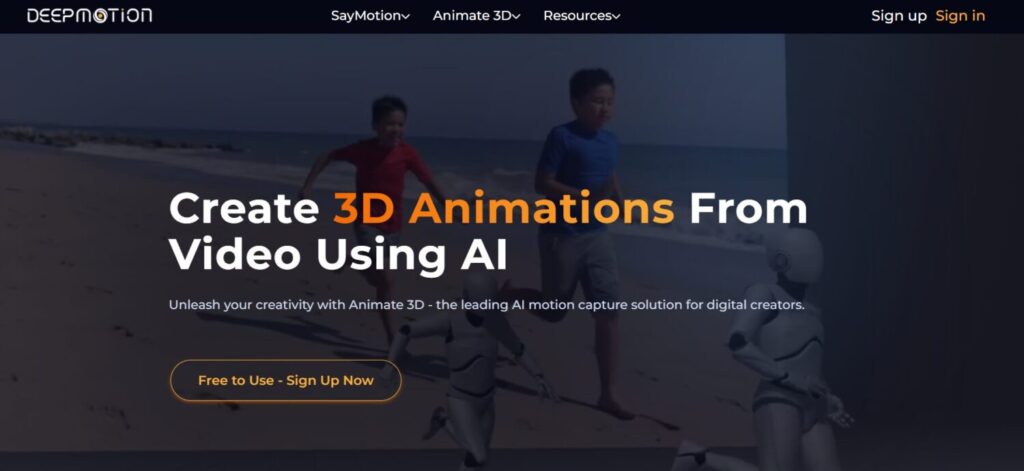
DeepMotion is a tool which helps in animation. Its 2025 suite analyzes video clips to animate 3D designs and models with uncanny realism. Filmmakers use it to choreograph crowd scenes, while fitness apps create hyper-accurate yoga avatars. Its “Motion Style Transfer” lets you apply dance moves from a TikTok clip to your original character.
Pricing:
- Free: Limited number of credits, mainly for small projects.
- Innovator ($48/month): 480 credits per month
- Professional ($117/month): 1500 credits per month
- Studio ($180/month): 7200 credits per month, unlimited credits with unlimited creations.
Also Read: Best 10 Chatbot Builders to Boost Your Sales
3DFY.ai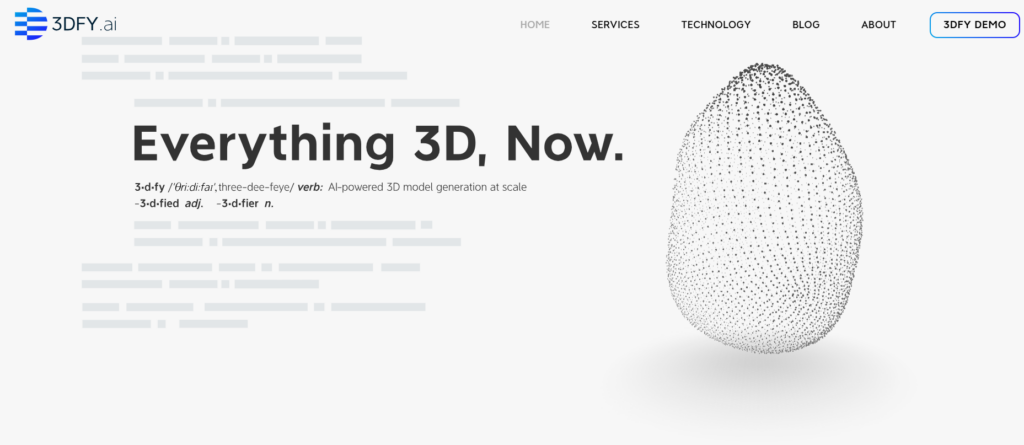
3DFY.ai dominates the text-to-3D space. Describe “a dragon with bioluminescent scales,” and its 3D AI art generator crafts a rigged, game-ready model. The 2025 update added parametric customization—adjust wing spans, texture density, or material reflectiveness post-generation. Tabletop RPG designers and AR filter creators swear by its versatility.
Pricing:
- Pay-as-you-go: $10–$50/model (complexity-based).
- Enterprise: Tailored plan according to the demand.
Also Read: How to Build an AI Bot for Your Product for Free
Luma AI DreamMesh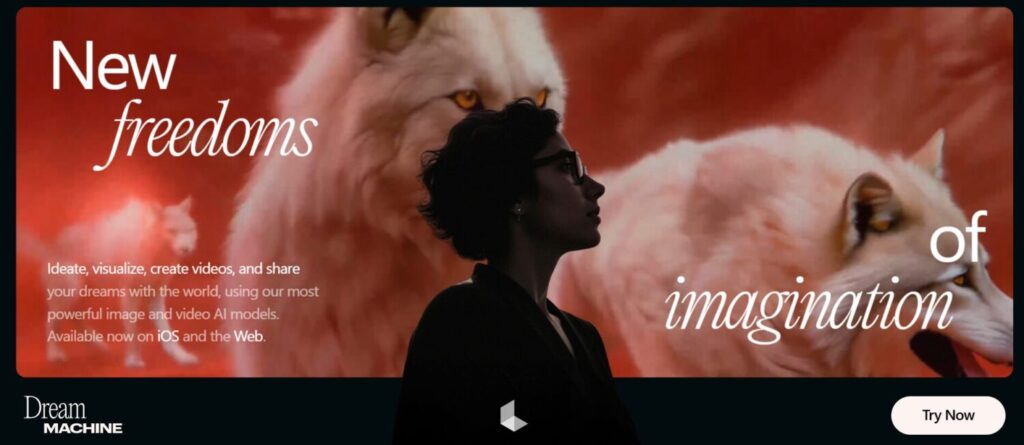
Luma’s 2025 flagship, DreamMesh, turns smartphone videos into editable 3D scenes. Point your camera around a room, and its NeRF-based AI constructs a navigable digital twin. Realtors use it for virtual tours, while historians preserve artifacts. Its STL AI generator also auto-repairs mesh errors for 3D printing.
Pricing:
- Free: limited features, watermarked content.
- Lite ($9.99/month): 3,200 credits, high-priority generations, non-commercial use.
- Plus ($29.99/month): 10,000 credits, high-priority generations, commercial use, no watermark.
- Unlimited ($94.99/month): unlimited relaxed generations, 10,000 credits for fast mode, commercial use, no watermark.
- Enterprise: Tailored plan according to the demand.
Also Read: Unlocking Creative Potential: Best AI Music Generators
Meshcapade BodyGen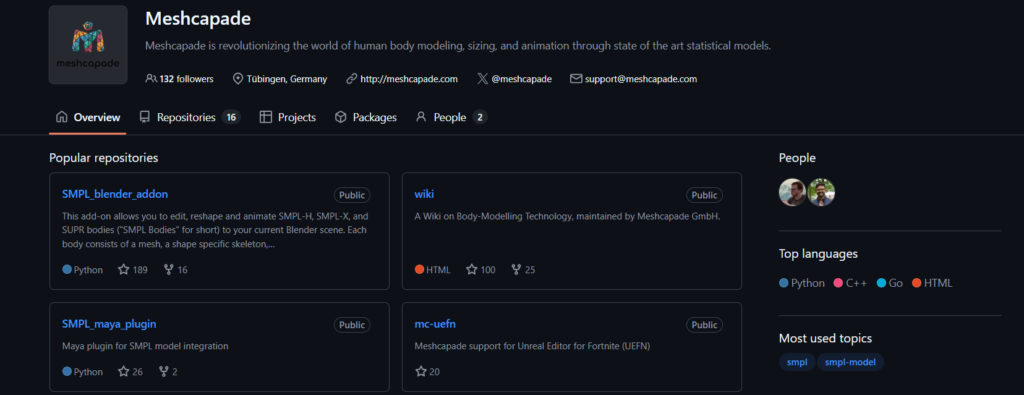
Meshcapade’s AI scans body shapes to craft anatomically precise 3D humans. Fashion brands build virtual fitting rooms, while healthcare pros model prosthetics. The 2025 edition added AI-driven cloth simulation, predicting how fabrics drape on different body types.
Pricing:
- R&D License: €18,000 for internal research and development for SMEs, €60,000 per year for enterprises.
- Commercial Use License: For commercial use, the pricing is €45,000/year for SMEs and €150,000/year for enterprises.
Also Read: Best AI Documentaries To Watch
Adobe Substance 3D
Adobe has always been available with its tool stack when it comes to designing anything. Adobe Substance 3D is one of the most powerful tools for 3D creators with a massive library of assets and design materials. It contains a set of 5 powerful applications.
- Substance 3D Painter
It helps the designers add texture assets to their 3d models. You can add materials, filters, and decals with precision details directly on the model surface. - Substance 3D Sampler
It helps the designer to generate 3D models and tileable materials directly from the photos. - Substance 3D Stager
It helps the designer render the images by animating turntables such as stage, lighting, and AI-generated backgrounds. - Substance 3D Designer and Moduler
These two apps help the designer sculpt models and design something unique. - Substance 3D Assets
It has a library of more than 20,000 assets which helps the designer to do referencing or add something in their 3D design.
Pricing: Adobe Substance 3D has different pricing options for 3D collection and 3D texturing.
- 3D Collection ($49.99/month): Get access to full apps with 50 Substance 3D Assets per month and 100GB of cloud storage.
- Team ($99.99/month per license): Get access to full apps with 100 Substance 3D Assets per month, 1TB of cloud storage and exclusive business features.
Also Read: Best AI Humanoid Robots
Spline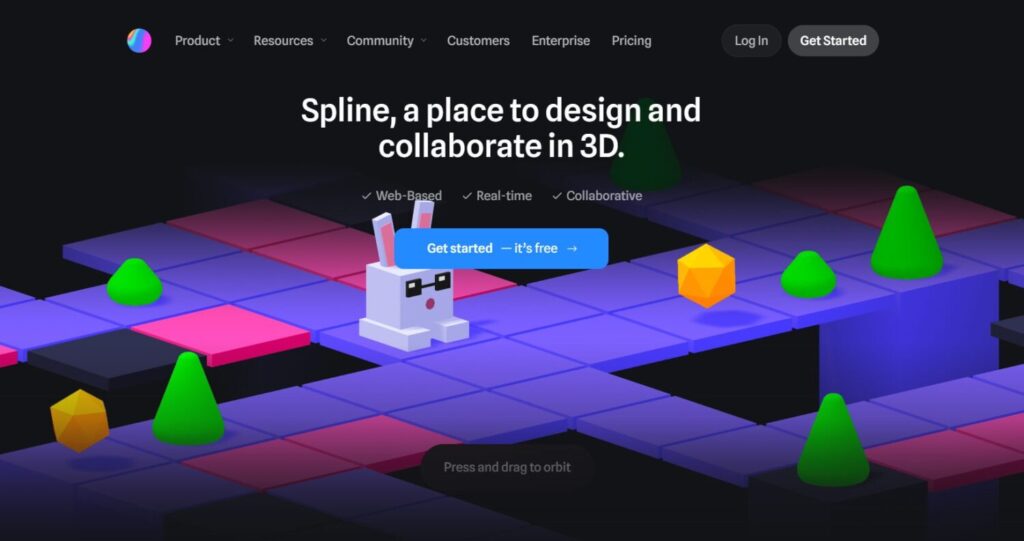
Spline is a web-based tool that allows users to generate 3D designs with the help of AI such as text, interactive 3D experiences, 3D icons, and more. It can also generate game controls and handle real-time physics simulations around the objects. Users can add their AI prompt to create objects, animations, and textures. Spline has a collaborative environment which allows designers across the globe to add comments and collaborate on a project.
Pricing:
- Free: limited personal files, web exports with watermark, access to the Spline library.
- Starter($12/month): up to 2 personal file editors, upload video, high-resolution image exports +.
- Professional ($20/month): unlimited personal file editors, download code exports, upload audio, Spline AI, unlimited APIs and Webhooks
- Enterprise: Tailored plan according to the demand.
Also Read: Best AI Tools for Sales
How to Choose Your AI 3D ToolDefine Your Goal
- Art/Animation: DeepMotion or 3DFY.ai for rigged characters.
- 3D Printing: STLforge AI or Luma DreamMesh for print-ready STLs.
- Architecture/Product Design: NVIDIA Omniverse for physics accuracy.
Budget Smartly
Free tiers (Kaedim, Luma) are great for testing. Studios should prioritize collaboration features (Omniverse) or bulk processing (STLforge).
Skill Level Matters
Beginners thrive on Kaedim’s simplicity. Pros leverage Omniverse’s node-based workflows.
Output Quality
For gaming, prioritize rigging tools (DeepMotion). For manufacturing, STL precision is key.
Gone are the days when 3D design demanded years of Blender tutorials or a $10,000 workstation. In 2025, AI 3D model creators will empower everyone—from TikTok creators to aerospace engineers—to turn ideas into tangible assets. Start with Kaedim’s free tier to dip your toes, or go pro with NVIDIA Omniverse’s simulation prowess. As AI evolves, expect tools that blur the line between imagination and reality even further. The future isn’t just automated; it’s limitless.
Frequently Asked Questions (FAQs) What is the best AI 3D modelling tool for beginners with no prior experience?Beginners should start with Kaedim 3.0 or Luma AI DreamMesh. Kaedim simplifies turning 2D sketches into 3D models with automated UV unwrapping, while Luma AI lets users create editable 3D scenes using smartphone videos. Both offer free tiers and intuitive interfaces, eliminating the need for advanced technical skills.
Are there free AI-powered 3D design tools available in 2025?Yes! NVIDIA Omniverse (free for individuals), Kaedim (Indie tier with free credits), and Luma AI DreamMesh (free tier with watermarked content) offer robust free options. These tools provide automation for modelling, texturing, and scene generation, making professional-grade design accessible at no cost.
Which AI tool is ideal for generating 3D-printable models (STL files)?For 3D printing, Luma AI DreamMesh and STLforge AI excel. Luma converts videos into 3D scenes and auto-repairs meshes for printing, while STLforge AI specializes in geometry optimization to ensure error-free, print-ready STL files.
How do text-to-3D generators work, and which tool is most versatile?Text-to-3D tools like 3DFY.ai use natural language processing to interpret prompts (e.g., “bioluminescent dragon”) and generate rigged, textured models. 3DFY.ai stands out for its post-generation customization, allowing adjustments to proportions, textures, and materials, making it perfect for game developers and AR designers.
Can these tools support real-time team collaboration?Yes. NVIDIA Omniverse and Spline are built for collaboration. Omniverse enables cloud-based teamwork with AI-assisted version control, while Spline offers a web-based workspace where users globally can co-edit projects, leave comments, and export interactive 3D experiences seamlessly.
- Home
- About Us
- Write For Us / Submit Content
- Advertising And Affiliates
- Feeds And Syndication
- Contact Us
- Login
- Privacy
All Rights Reserved. Copyright , Central Coast Communications, Inc.